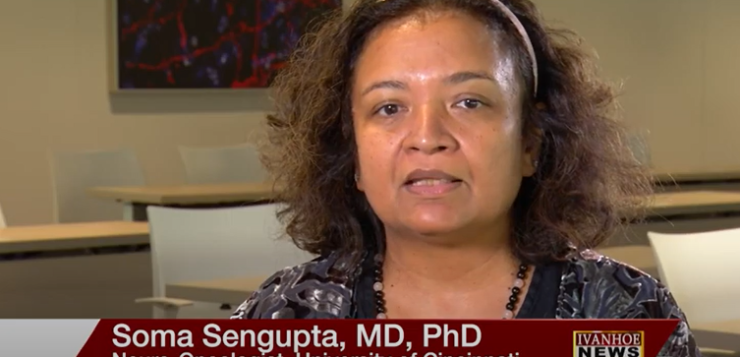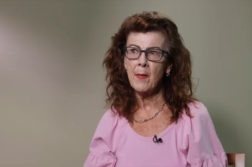Soma Sengupta, PhD, Associate Professor of Neurology, Harold C. Schott Endowed Chair of Molecular Therapeutics, Associate Director of the University of Cincinnati Gardner and Neuroscience Institute Brain Tumor Center, talks about a how to help patients with brain fog.
Can you describe what chemo brain or chemo fog is and what a patient goes through?
SENGUPTA: Brain fog is not only a phenomenon seen in cancer patients, but it can also occur in other conditions, for example, long haul COVID. People are complaining about similar symptoms where they’re confused about short-term memory issues. For example, where have I left my keys? Have I turned my stove off? Did I do this already? That kind of thing. When most of us are really exhausted, we do that kind of thing. But this can be a regular occurrence for some patients who experience this brain fog or chemo brain.
Tell me a little about the program you’re working on to help patients who are struggling with this.
SENGUPTA: I’m doing a fellowship at the Andrew Weil Integrative Medicine Center where I became interested in wellness and digital technologies. I was very fortuitous in being connected with Claudia Rebola. Claudia and I talked about various ideas we had and asked what if we could develop a music therapy that doesn’t require a therapist? And she asked why? And I said, well, during COVID, a lot of patients can’t go to a therapist, can’t go for their music therapy sessions, or can’t go for their art therapy sessions. Why don’t we digitalize the experience? I told Claudia I wanted an app that could allow patients to express their musical ability. So, in other words, to have musical tones where you could overlay genres and create your own music track. And then another thing we wanted to do is say, well, patients might be listening to music all the time, so why don’t we compare this. We thought what group of patients would be best to study. The problem with a lot of cancer patients is that they might have brain metastasis or brain tumors that inhibits hidden pathways of information being relayed effectively. And we thought with chemo brain, as long as we make sure that the breast cancer patients don’t have any of these lesions, we can then study whether the music is benefiting them. So, one group of patients are just listening to music which is within the app, while the other is creating their music. You have a baseline of this brain fog and you have to be assessed for it. So that app and that study is in process right now.
Do you have any anecdotal evidence that this is working for some patients? Do you have any early information or data from the study?
SENGUPTA: What I can tell you is one of the music therapists that we collaborate with is based at Indiana University. She found that music therapy in breast cancer patients was helpful. Not using a digital technology but music therapy in general, so we wanted to see if now we could refine it into a digitalized technology so that more people could utilize this resource. And we also want to apply it in another setting where we use the digitalized technology for other brain fog conditions. So, it’s not exclusive to just this.
What is it about having to not just listen but be an active participant in the music and create the music that you think will help lift the fog? What’s the mechanism that’s helping people feel a little better or think a little more clearly?
SENGUPTA: If you think of the circuitry of the brain, if you’re learning a new language, you must think about how you’re going to do it and how those words form and how they sound. Similarly, with music, there are pathways that are triggered through an area. You must listen to music, then you have to think about how you’re going to write something. So rather than words, the music area of the brain is a different area of the brain. You are helping that area sort of exercise. These technologies are sort of in a way helping the rewiring and exercising areas of the brain that normally wouldn’t do it.
How long do you anticipate this study will go?
SENGUPTA: Each participant will be on the study for 12 months. So, the total amount of time that the study will be taking place is about two years.
When do you anticipate publishing results?
SENGUPTA: Probably in a couple of years.
Can you tell me the total number of patients you were trying to enroll?
SENGUPTA: The total number is 10 patients, five and five because it’s not a trial. It’s just a pilot feasibility study. We’re beta testing the technology first. We’re able to test the technology and then get an idea of what’s going on. And then we can use that basis for other studies which could be shorter.
Interview conducted by Ivanhoe Broadcast News.
END OF INTERVIEW
This information is intended for additional research purposes only. It is not to be used as a prescription or advice from Ivanhoe Broadcast News, Inc. or any medical professional interviewed. Ivanhoe Broadcast News, Inc. assumes no responsibility for the depth or accuracy of physician statements. Procedures or medicines apply to different people and medical factors; always consult your physician on medical matters.
If you would like more information, please contact:
TIM TEDESCHI
Sign up for a free weekly e-mail on Medical Breakthroughs called First to Know by clicking here




